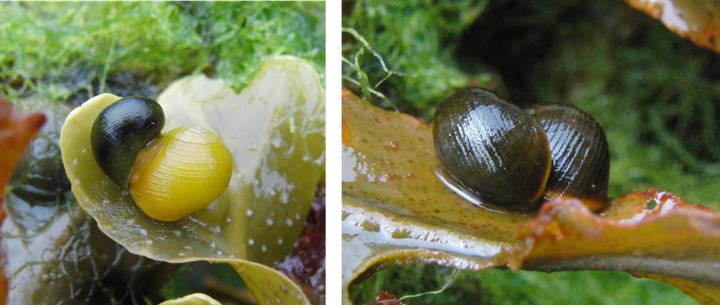Can sexual selection and disassortative mating contribute to the maintenance of a shell color polymorphism in an intertidal marine snail?
 Image credit: Daniel Estévez-Barcia
Image credit: Daniel Estévez-BarciaAbstract
Littorina fabalis is an intertidal snail commonly living on the brown algae Fucus vesiculosus and showing frequent shell-color polymorphisms in the wild. The evolutionary mechanism underlying this polymorphism is currently unknown. Shell color variation was studied in mated and non-mated specimens of this species from different microareas in one locality from NW Spain, in order to estimate sexual selection and assortative mating that may (still) be operating in this population. The analyses across microareas allowed us to investigate frequency-dependent selection and assortative mating components, mechanisms that could maintain the polymorphism. The presence of shell scars caused by crab attacks, an environmental variable not related with sexual selection or assortative mating, was used as experimental control. This study provides new evidence of significant disassortative mating and some degree of sexual selection against some shell colors, supporting the results found 21 years ago in a similar study, i.e. in the same species and locality. The similarity of these estimates during the studied period suggests that this experimental approach is consistent and valid to be extended to other populations and organisms. In addition, sexual selection and assortative mating estimates did not change across microareas differing in shell color frequencies, suggesting than the polymorphism can not be maintained by a frequency-dependent (sexual selection-based) mechanism. Our main hypothesis is that negative assortative mating could contribute to the maintenance of the polymorphism, perhaps by males showing distinct female color preferences when searching for mates.